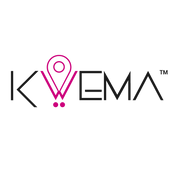Last January 28th morning, six workers died, and 12 others were injured and sent to the hospital due to a liquid nitrogen leak at a poultry plant in Gainesville, Georgia. Recent updates point that the accident was the result of a ruptured line carrying liquid nitrogen. This is used when chicken is processed, seasoned, and cooked, and then frozen and packaged.
Poultry plants often use liquid nitrogen for freezing their products. A nitrogen leak can be hazardous because it is colorless, odorless, and freezing. Not only is inhaling a large amount of nitrogen cause tissue damage and burns, but it can also cause dizziness, nausea, vomiting, loss of consciousness, and even death.
According to an NPR press notice, 130 employees had to be evacuated from the facility. And one worker said his coworkers started pushing each other to get out.
Based on this unfortunate event, we questioned how organizations should be prepared to quickly and effectively face this kind of situation to keep their people and their workplace safe. Here we share some of our findings on the importance of managing workplace emergencies.
According to OSHA, a workplace emergency is a situation that threatens employees, customers, and the public. As a result, these situations can lead to physical or environmental damage and disrupt or shut down activities.
Workplace emergencies are unpredictable and may be natural. For instance, they can be caused by natural disasters such as floods, hurricanes, tornados, or winter weather. On the other hand, emergencies may also be human-made. Some examples include chemical spills, radiological accidents, fires, civil disturbance, and workplace violence. Disease outbreaks like COVID-19 could also become an emergency if a workplace doesn’t take appropriate measures to protect its employees.
The main reason for being prepared to manage workplace emergencies is because they are unexpected. Therefore, the best way to protect your organization during an emergency is to be prepared to respond effectively by developing a plan that ensures everybody’s safety and well-being at your workplace.
Based on OSHA standards, a work emergency plan must include at a minimum:
Including calling 911, an internal emergency number, a manual alarm, and many other ways.
These procedures help employees understand what type of actions they should take before the evacuation, how to do it, and who is authorized to order it.
Employees must know who may be required to operate fire extinguishers or shut down operations that could be damaged or can generate additional hazards such as gas and electrical systems.
It refers to the procedures to ensure that every worker has been evacuated. It is common to designate an “evacuation warden” to assist personnel during an evacuation and account for them.
Although these are minimum requirements, you can include additional procedures based on the hazards and threats your organization can be exposed to.
Workplace emergencies can not only be stressful but are something companies can be prepared for. With the assistance of suitable safety protocol and well-trained employees, workplace emergencies can be less of a hazard. As well, the institution of safety wear for employees can also help mitigate these risks. This is where Kwema can help! Kwema is a company that offers wearable safety products (such as smart badges and smart jewelry) that mitigate workplace hazards such as accidents or injury. Kwema's products do not require training and therefore can be easily implemented into that workplace. They also include a feature that you can activate during emergency protocol to quickly contact the authorities. The devices work to help mitigate risks precisely as the ones talked about in this article. With the recent rise of COVID-19, Kwema's devices can be used as a way to quickly contact trace in work environments helping to slow down the spread of COVID.
